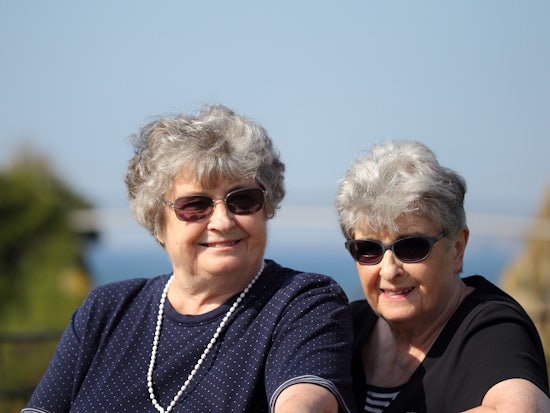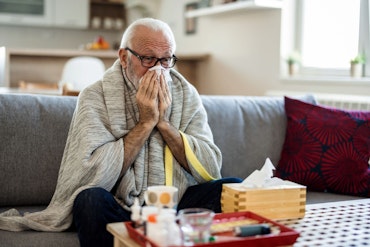Twins are key to unlocking the brain’s genetic blueprint
Almost ten years of using sets of identical and non-identical twins aged over 65 for researching the influence of genes on the development of vital brain matter structures may have paid off according to recently published findings.

Older twins are being used to research the brain’s genetic blueprint (Source: Shutterstock)
The study, run by Australia’s Centre for Healthy Brain Ageing (CHeBA), worked with 623 participants who were all twins, identical and non-identical, who were involved in the Older Australian Twin Study, which was aimed at investigating healthy brain ageing in older twins.
Healthy ageing of participants was characterised by low levels of disability, high cognitive and functional capacity, and an active engagement in life.
From the research, which was conducted over a number of years from 2007, and with 2, 4 and 6 year follow up tests; the research team has recently reported several key findings in the journal Scientific Reports.
The key findings published in the journal show that a number of brain structures and processes have moderate to strong genetic contributions – including genetic contributions greater than 70 percent when it comes to the subcortical hippocampus, which plays a key role in memory process; as well as for the cortical structures, including the frontal lobe, which covers movement, memory and motivation; and occipital lobe for vision processing.
One of the biggest reported findings related to the data suggests there are three genetically correlated clusters within the brain – all of which are regions where the same sets of genes are believed to be influencing multiple structures.
CHeBA Co-Director Professor Perminder Sachdev says that going forward, the twin study has a lot of potential.
“Since, over time, the expression of genes varies depending on different influence in the environment, by studying twins, OATS aims to determine which influences on the ageing process are genetic, which are environmental, and how the two interact,” he says.
“Since identical twins share 100 percent of their genes, detailed comparisons of these two groups have the potential to discover new insights into the genetic and environmental factors involved in cognitive decline or resilience.
“The twin studies show that genetic predisposition for cognitive function is 60 percent and environment is 40 percent.
“CHeBA has data on 300 pairs of twins including preliminary amyloid imaging, MRI imaging, neuroscience data and genetic data.
“Increasingly we are identifying genes that have small effects on ageing.
“These genes may not be modifiable but they will shed light on how things develop in the body.
“You can do things to influence this because genes don’t work in isolation; when you look specifically at decline, environmental factors weigh in more than genetics.”
In an article released by University New South Wales and CHeBA, lead researchers say that they know ‘genes strongly underpin brain development’ and add that there is still much they don’t know.
They add that they are ‘hopeful that their results will lead to progress in the field and a better understanding of the genetic blueprint of the human brain’.
More information on OATS is available online.











![The new Aged Care Act exposure draft is slated for release in December of 2023, but advocates hope to see it rolled out on January 1, 2024. [Source: Shutterstock]](https://agedcareguide-assets.imgix.net/news/articles/wp/agedcareact__0811.jpg?fm=pjpg&w=520&format=auto&q=65)












Comments